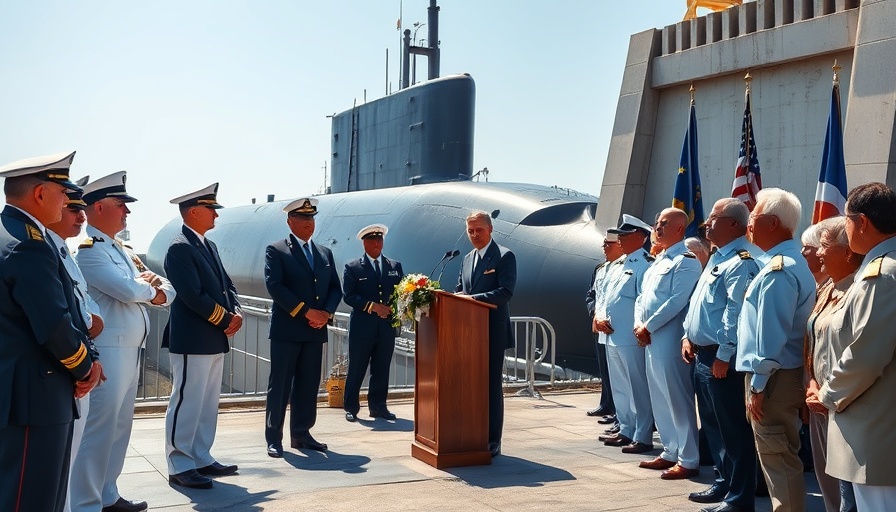
The Implications of France's Newest Barracuda-Class Submarine
On July 4, 2025, France commissioned the SSN Tourville, the third submarine of the Barracuda-class nuclear-powered attack fleet. This moment marks a pivotal advancement for the French Navy, which is committed to modernizing its fleet by replacing the aging Rubis-type submarines from the 1980s. As global naval powers expand their capabilities, the commissioning of these submarines presents France as a competitive player in the naval arena.
Why the Barracuda-Class Matters
With the commissioning of Tourville, France emphasizes its dedication to possessing advanced submarine technology. Built by Naval Group, the Barracuda-class submarines are designed with remarkable operational capabilities, such as extended deployment periods—essential for sustained military operations. The Tourville can dive deeper and remain submerged longer than its predecessors, showcasing advancements that speak to the future of naval warfare.
Supporting Infrastructure Development
Alongside the rollout of the Barracuda-class submarines, France has initiated significant upgrades to naval facilities, including the inauguration of Missiessy Dock No. 2 in Toulon. This upgraded facility can accommodate two submarines simultaneously and is a cornerstone in supporting operational readiness as the fleet expects growth with five more submarines by 2030. The investment of €3 billion over 15 years in the Barracuda Support Infrastructure Program underscores the French military's commitment to sustaining its maritime capabilities.
Technological Innovations at Sea
The Barracuda-class submarines are not just mighty vehicles for war but are equipped with cutting-edge technologies. These submarines will have capabilities including MBDA's naval cruise missiles and F21 heavyweight torpedoes, enhancing their lethality against both surface and underwater targets. The integration of these advanced missile systems into the Barracuda-class will significantly boost their tactical maneuverability and strategic advantage across the European maritime landscape.
The Workforce Behind the Design
About 2,500 individuals are involved in the design and production of the Barracuda-class submarines, representing a significant investment in talent and resources. This includes around 800 subcontractors, emphasizing the collaboration and commitment across the French industrial landscape, securing jobs, and showcasing France’s expertise in high-tech shipbuilding.
Potential Future Trends in Naval Warfare
As naval technology evolves, there are both opportunities and challenges facing countries like France. The incorporation of unmanned systems and artificial intelligence in submarine operations could lead to entirely new strategies in naval engagement. Presently, France’s investment in the Barracuda-class illustrates a robust stance in adapting to these future trends to ensure maritime security.
Reflecting on the Strategic Importance
The commissioning of the SSN Tourville offers not just a technological triumph but also a strategic milestone for national security in an uncertain global landscape. As tensions rise and maritime dominance becomes increasingly competitive, France’s modern fleet underlines the importance of being prepared and adaptable. This newly-commissioned submarine, along with its fleet, symbolizes France's readiness to assert its influence, protect its interests, and respond effectively to potential maritime threats.
With ongoing developments in the naval sector, staying informed on submarine advancements and defense policies is crucial for understanding the dynamics of global security. The Barracuda-class submarines represent a significant part of this narrative, and monitoring their impact will be essential for evaluating France's role in future defense strategies.
 Add Row
Add Row  Add
Add 




Write A Comment